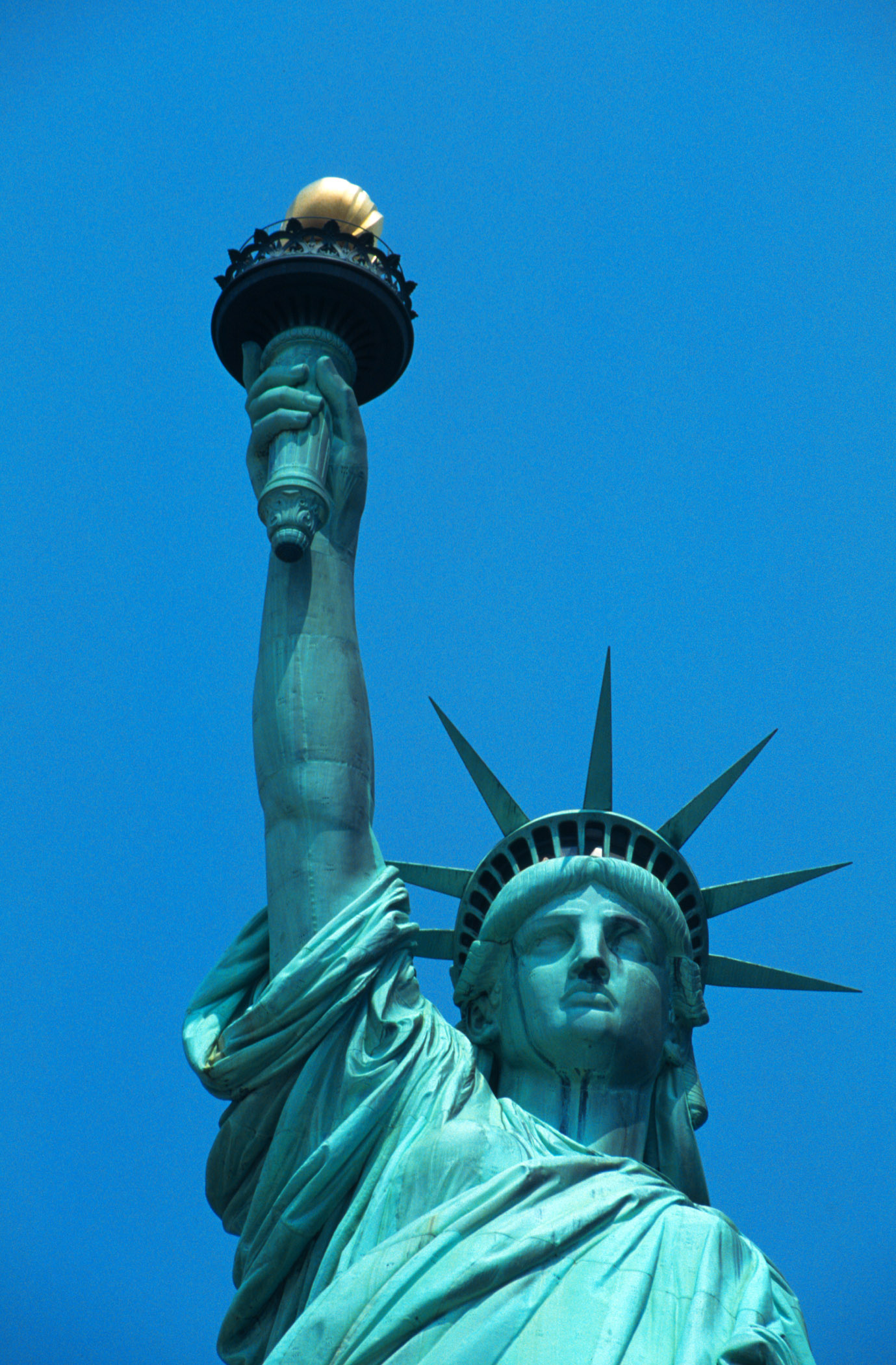|
|
LITR 5731 Seminar in Multicultural Literature: American Immigrant: model assignments 2012
|
|
Daniel B. Stuart
Boil On Oh
Melting Pot: The Dichotomy of the Immigrant Narrative, Its Fluctuating
Perspectives and Changing Structure
For all of its descriptions as a “defining story or model of
American culture,” the immigrant narrative is really a dichotomy of themes, its
perspective one of dueling interpretations and delineated facets of the human
condition—the good and the bad, or “the beauty and the pain” (Divakaruni, 83).
On one hand, the concept of hope is well-represented. The indentured virtues of
freedom, liberty and opportunity, meant not merely for individuals, but for
entire families and nationalities, is a stronghold of constancy. Within the
structure of such personal narratives like that of Yezierska’s “Bread Giver’s”
or Mohr’s “The English Lesson,” it’s almost too easy to picture a personified
form of the Statue of Liberty beckoning to the “huddled masses yearning to
breathe free” to the secure, prosperous haven of America’s shores. For
characters like Max Goldstein and Lali, the promise of opportunity, guaranteeing
the “pursuit of happiness” to every immigran, is as true today as it ever was.
Yet this Promised Land makes no full pledges of assurance. There can be no real
fortified contracts, not even so much as a “good faith” agreement in regards to
individual outcomes. And though the documented, overly edified doctrines of
“certain unalienable rights,” of life and liberty, attempt to ensure that the
American Dream will at least remain its theoretical equivalent, and not
transform into an outright nightmare, there are no sureties that the immigrant
experience will be void of grievous, even perilous encounters. Thus the
contradiction of this very unique experience, though it’s one which no doubt
applies to all Americans in some way, is represented through the characters and
perspectives, the highs and the lows of America’s immigrants as embodied by a
plethora of authors gifted with the talent and attributes to characterize the
full diaspora of immigrant narrative.
Gish Jen’s “In The American Society” might be one of the most
quintessentially successful American Dream stories. Upbeat and optimistic, it
affirms the immigrant’s position while promoting its possibilities. Ralph Chang,
as described by his daughter Callie, is a Chinese-American who manages immersion
into all of the immigrant’s “stages” (and any sub-stages) as well as the process
of appropriating the American Dream. There’s the departure (hinted at), arrival,
acclimation, acculturation, achievement, assimilation and special acceptance and
attention from the dominant culture as well as a final reassertion of the
immigrant’s own identity. He and his family, by way of owning and managing a
pancake house, are able to “get rich right away,” even though the venture had
originally been undertaken to put the two daughters through college. Mr. Chang
then becomes a beacon within his community and those who were once like him, to
some degree aiding those who, like him, were seeking the better life. “If people
not helping me, I’m not here today,” he says when even his family argues at
Chang’s over-and-above efforts to aid those who can’t afford to “play
hide-and-seek with those deportation guys” (Jen, 158, 165). Success continues
for the Changs as they’re ultimately accepted to the local country club, boosted
by the recommendation of a member who’s kept her own Jewish Heritage a secret.
It gets even better when, ultimately, the situation builds to a confrontation in
which Chang himself refuses to compromise his integrity by cowing to the
inclinations of a prototypical unmarked American trying to patronize him. The
story ends with a perfect icing on the cake—the Changs rejecting the opportunity
to hobnob with the upper-crust types (who’ve presumably accepted them to a
point), preferring the subtle joys afforded by their own familial attributes and
the sublime feeling which comes from being proud of their own identities (Jen,
168-171).
While Gish Jen pens a cheery story with little in the way of
tone, mood or even context to suggest anything truly dower--the characters never
take themselves too seriously and never seem to need to—there’s a “marked”
contrast between it and several other stories, among them “In the Land of the
Free” by Siu Sin Far. In it another Chinese-American immigrant, Lae Choo, is the
wife of Hom Hing, a man already in America, supposedly earning his fortune. This
impression is short-lived for Lae Choo who runs the gamut from “shock,
resistance, exploitation and discrimination” in quick order after she loses her
infant child to the Customs department immediately upon arrival. It’s only a
temporary separation, but the experience devastates Lae Choo, plummeting her
into despair and immobility. The stunted prose of the story suggests this to be
a potentially fatal point in the life and well-being of Lae Choo, and likely for
the multitudes of other immigrants who’ve endured similar problems. Even when
she receives her child back when, in the mind of the reader, things will
conceivably be alright for the near future, there’s little to suggest that Lae
Choo will never be the same, especially with respect to bridging the gap between
her Chinese and American identities (Far, 3-11). Could this be construed as a
resistance to assimilation or mere oppression and exploitation by the dominant
culture? Or is it simply the narrative of a first generation immigrant, “heroic
but clueless,” dealing with the pattern of conflict inherently involved in the
process? It’s all of these, but it’s also this same dichotomy of “beauty” and
“pain,” of the inevitability of suffering in the human condition, of a life
which gives and takes away (quite literally so in the case of “In the Land of
the Free”).
In his 2010 essay “Strangers in a Strange Land,” Charles
Colson says that most immigrants assimilate eventually. Despite the urge to
cling to ethnic identity and old world customs, immersion into the dominant
culture is inevitable (Colson). This hints at the larger model of assimilation
and conformity to the dominant culture, but it can never be reckoned as a
formulaic blueprint. In “Silver Payments, Golden Roofs,” Chitra Divakaruni’s
protagonist, Jayanti, is a young, college-age girl whose elected to leave her
home in India—a rather lavish situation it should be noted—to live in America
with her aunt and uncle in an “undesirable” area of Chicago. Ignorant of the
perils of American domestic life as well as the economic predicament of her
relatives, who’ve come down in the world owing to some tragic circumstances,
Jayanti dreams of her “new” life, even meshing childhood fairy tale fancies with
contemporary ambitions, not understanding the dismal, confined and even
humiliating nature of what awaits her. By the end of the story, Jayanti is
indoctrinated into the harsh realities of life in America, not only on the
streets of Chicago where bigotry is openly paraded, but at home where despair
and the weight of disillusionment have driven her uncle to violence and
alcoholism, and her aunt to disgrace and degradation. Jayanti’s resilience in
the final portion of the story says a lot about her character, but there’s the
sense that, like her struggling aunt and uncle, the option to return home may
present itself as a more welcome presentiment. It’s not out of the question.
It’s a choice which exists more predominately for South Asian immigrants, but
it’s not an unfamiliar model of migration and remigration among other ethnic
bodies. Immigrants with the means to move towards the better deal will do so.
This presents another element of the “immigrant narrative” previously not
discussed, and yet another pattern blended into the “immigrant stages.” This
element still abides within the dichotomy of “beauty” and “pain,” however.
Jayanti will encounter both whether she chooses to stay or leave. So will many
others.
Andrew Carnegie mentions literacy and education as a key to
success and, by proxy, the American Dream. Others like Mohr, Jen and others
allude to its benefits as well, but our nation as well as our world is
reconfiguring itself under new parameters. The world is becoming “flatter.”
Education, while still vital, can no more guarantee opportunity than it can
merit immediate income. The American Dream is no longer solely “American.”
Neither is it solely European or Indian or Canadian, but the “American” is
eroding from the equation. Dominant culture, model minorities, inclusion of
certain ethnic groups vs. certain others are still themes and, indeed, literary
constructs which predominate the immigrant narrative, but the immigrant
narrative itself is being transformed. The literature itself is being rewritten.
And yet it is not merely graduating from one frame of reference to another, not
just transitioning from one continental group to another, one model minority
group to another, one linguistic group to another. The immigrant narrative is
evolving beyond the basic stages. The “Old World” may now be the new (Mexico),
the “journey” may be shorter and less of an issue, the “shock, resistance, etc.”
may not exist at all (ethnic enclaves in which no English is spoken),
assimilation is non-essential, and any rediscovery of ethnic identity is
marginal. One thing will always remain the same within the migratory periods of
humans—the inevitability of suffering and the potential for success.
Works Cited
Brown, Wesley and Amy Ling, eds.
Imagining America: Stories From The
Promised Land. Rev. Ed. New York: Persea, 2002.
Carnegie, Andrew.
Autobiography of Andrew Carnegie. White, n.p. Web
Colson, Charles. Land
of Broken Promises. 22 June 2010. Web.
Declaration of Independence. White, n.p. Web.
Divakaruni, Chitra. “Silver Pavements, Golden Roofs.”
Imagining America: Stories From The Promised Land. New York: Persea, 2002.
pp. 70-83.
Far, Sui Sin. “In the Land of the Free.”
Imagining America: Stories From The
Promised Land. New York: Persea, 2002. pp. 3-11.
Jen, Gish. “In the American Society.”
Imagining America: Stories from the
Promised Land. New York: Persea, 2002. pp. 158-171.
Mohr, Nicholasa. “The English Lesson.”
Imagining America: Stories from the
Promised Land. New York: Persea, 2002. pp. 21-34.
White, Craig. LITR 5731
Multicultural Literature: American
Immigrant Literature. English Dept. UHCL. Web. 2012.
Yezierska, Anzia. “The Bread Givers.” White. Web.


